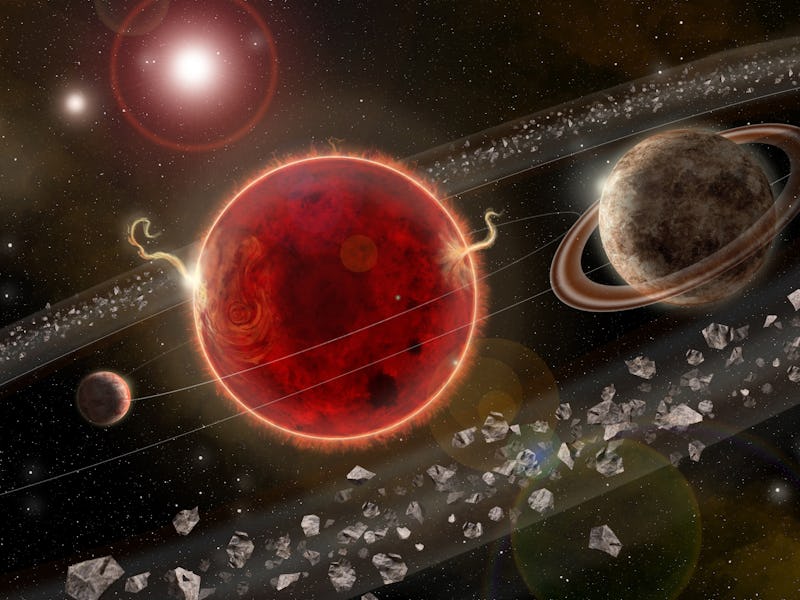A second super-Earth may be orbiting the nearest star to our Sun
Scientists think they detected a second planet reminiscent of our own orbiting around Proxima Centauri.

Earth may have a new planetary neighbor, orbiting around the next-nearest star system to our own. This new neighbor, residing just 4.2 light years away, is strangely reminiscent of Earth, with some key differences — it is a little larger and much colder — but otherwise, the resemblance is uncanny given their proximity.
The discovery comes after scientists observed what looks like a second planet orbiting around Proxima Centauri, the closest-known star to our own solar system.
The findings are detailed in a study published Wednesday in the journal Science Advances. The research draws on 17 years of radial velocity measurements to suggest that a super-Earth — basically a larger, Earth-like planet — may be orbiting around Proxima Centauri. The findings provide astronomers with a potential new exoplanet that can be observed at close proximity. They also challenge established theories of how low-mass planets form.
Exploring our galactic neighborhood
Proxima Centauri is located 4.2 light years away from the solar system. It is one of the sun of the Alpha Centauri star system, the closest known star system to our own. It consists of two stars interlocked in an orbit around each other, or binary stars, and one other star.
Although Proxima Centauri is the closest star to us, it is too small to see with the naked eye. Proxima Centauri is a low-mass red dwarf star, thought to be about an eighth of the mass of the Sun and 500 times less bright.
Proxima Centauri through the Hubble telescope
In 2016, scientists discovered a planet orbiting around the small star. Proxima Centauri b orbits the star at a distance of roughly 4.7 million miles, with an orbital period of approximately 11.2 days. The planet is about the same size as Earth, and orbits within its star’s habitable zone — the distance at which a planet may hold liquid water. Some believe that it may potentially host life.
A brother for Proxima Centuari b
Proxima Centuari b may not be its host star’s only child.
When a planet orbits its star, it causes the star to slightly shift in a small circular motion as it’s tugged on by the planet’s gravitational pull. In the new study, scientists detected changes in the wavelength of the light coming from the star as it shifted between red and blue. The shift indicates that the star is moving towards and away from the Earth at regular intervals — likely due to the presence of a planetary body.
If confirmed, Proxima Centauri c is likely a super-Earth, a planet with a mass larger than that of Earth’s, but smaller than Uranus and Neptune. The potential planet orbits around its star once every 5.2 years, with a mass six times larger than Earth.
Artist’s impression of the exoplanet Proxima Centauri b. More work is needed to confirm and characterize Proxima Centauri c.
Due to its star’s dimness and long orbital period, it is unlikely that Proxima Centauri c is habitable.
But the planet may provide new insights on how planetary bodies form.
Proxima Centauri c challenges theories of how low-mass planets form around low-mass stars. That’s because it is located beyond the ‘snow line’ of the star system.
The snow line is the point at which it is cold enough for any water on planets to freeze. They are an ideal spot for accretion disks, or a rotating disk of matter from which planets form. Super-Earths like Proxima Centauri c generally form near the snow line, and not beyond it — suggesting astronomers are missing something.
That matters for theories about how our own planet formed. Earth is a low-mass planet, too. So if Proxima Centauri c does indeed exist, it may help rewrite our own origin tale.